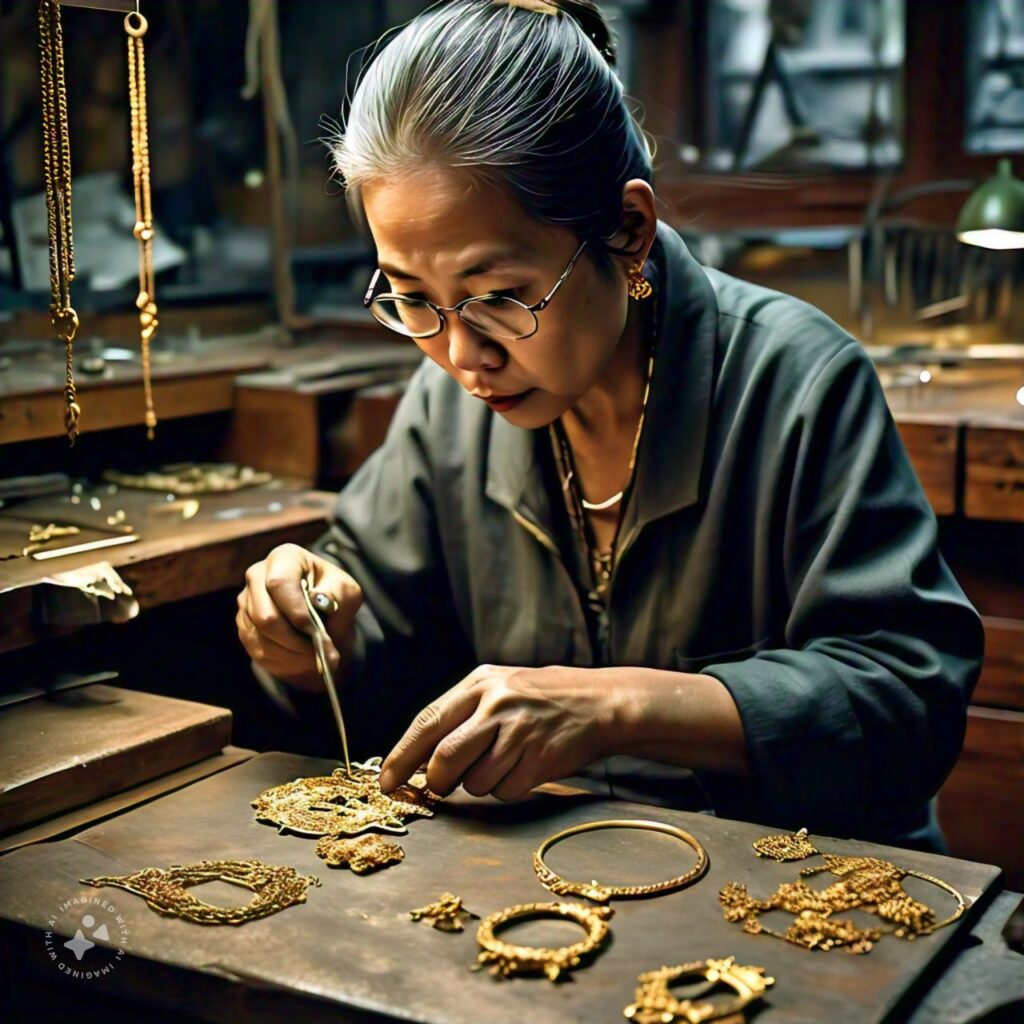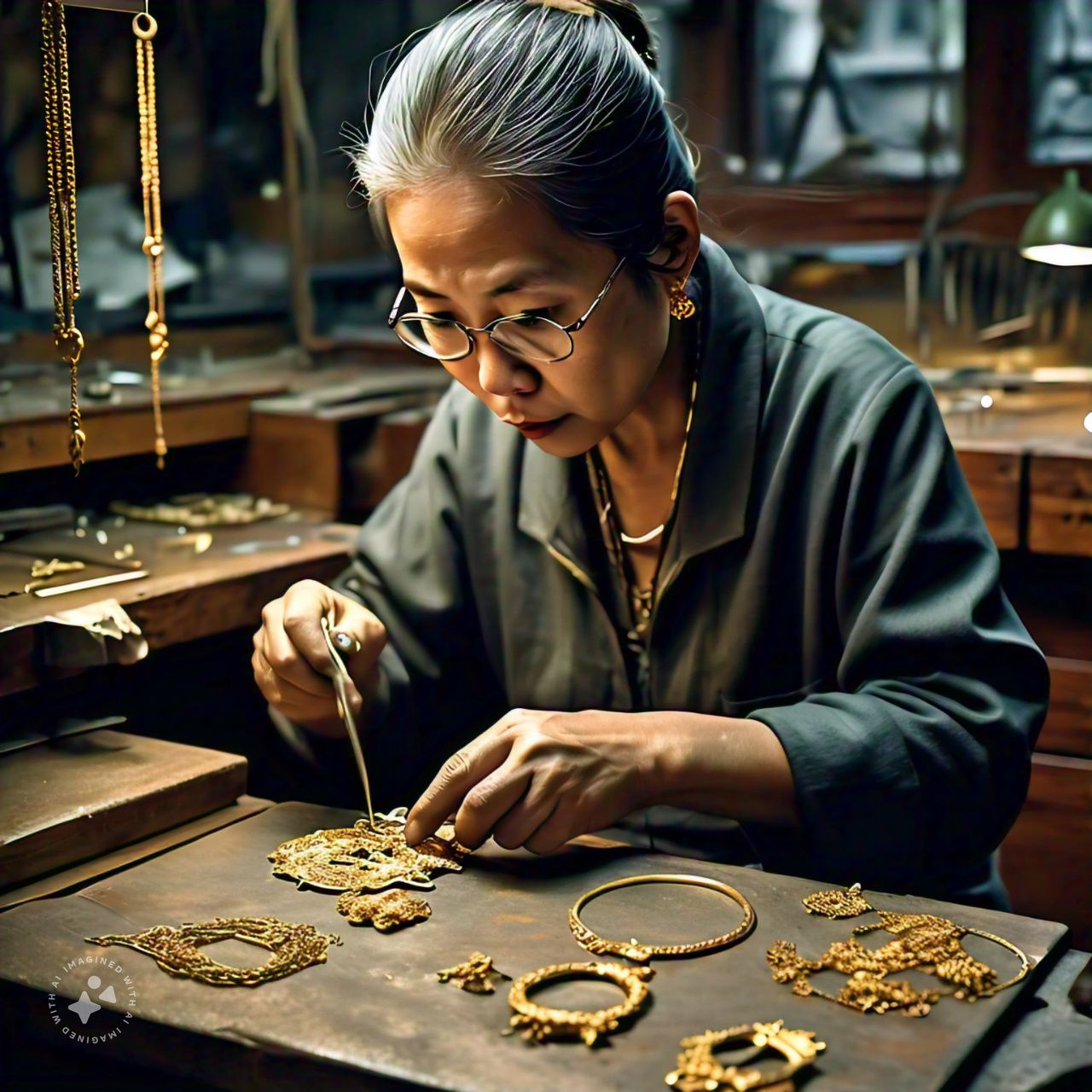Antique gold jewelry holds a special place in the hearts of collectors, investors, and anyone with an appreciation for history and craftsmanship. These pieces are often not just valuable for their gold content but also for their historical significance, design, and rarity. If you are considering selling antique gold jewelry, it’s important to understand how gold buyers assess and value these pieces. Let’s delve into the key factors that influence the valuation of antique gold jewelry by gold buyers.

1. Assessment of Gold Purity
The primary factor in valuing any gold jewelry, including antiques, is the purity of the gold. Gold purity is measured in karats, with 24 karats being pure gold. Antique jewelry often ranges from 18k to 22k, though some pieces can be of lower or higher purity depending on the era and origin.
Methods Used to Assess Purity:
- Acid Testing: A small scratch is made on the jewelry, and acid is applied to test the reaction. This method helps determine the karat level of the gold.
- X-Ray Fluorescence (XRF) Testing: A non-destructive method that uses X-rays to measure the gold content accurately without damaging the piece.
- Electronic Gold Testers: These devices can quickly and accurately read gold purity using an electronic probe.
2. Weighing the Gold
After determining the purity, the next step is to weigh the jewelry. This weight, combined with the purity level, helps establish the intrinsic value of the gold content. However, in the case of antique jewelry, the weight is not the sole determinant of value since craftsmanship and historical value also play significant roles.
3. Assessment of Craftsmanship and Design

Antique jewelry is often prized for its intricate designs and the skill of its craftsmanship, which can add significant value beyond the mere weight and purity of the gold. Gold buyers consider factors such as:
- Era and Style: Jewelry from certain historical periods, like the Victorian or Art Deco eras, can command higher prices due to their distinctive styles and the popularity of those periods among collectors.
- Handmade vs. Machine-Made: Handcrafted pieces are often more valuable than those mass-produced by machines, as they reflect a higher level of artistry and uniqueness.
- Detailed Work: Intricate details, such as filigree work, engraving, and stone settings, add value. Buyers look at the quality and condition of these features when assessing the piece.
4. Historical and Rarity Value
The age, origin, and rarity of antique gold jewelry significantly impact its value. Buyers often research the piece’s history, including:
- Provenance: Documentation or any proof of the piece’s history and previous ownership can increase its value. Pieces with a rich or famous provenance, such as those owned by notable figures, are highly sought after.
- Limited Editions or Rare Pieces: Jewelry that was produced in limited quantities or is rare due to the destruction or loss of similar pieces over time can fetch a higher price.
- Cultural and Historical Significance: Items with connections to significant historical events or cultural importance can also be more valuable.
5. Condition of the Jewelry
The condition of the antique jewelry plays a crucial role in its valuation. Gold buyers will carefully inspect the piece for:
- Signs of Wear and Damage: Scratches, dents, missing stones, or repairs can lower the value.
- Patina: For some collectors, the patina, or the surface wear that develops on gold over time, is desirable and adds to the piece’s authenticity and charm. However, excessive tarnishing or corrosion may be seen as damage.
6. Presence of Gemstones

Many antique gold pieces feature gemstones, such as diamonds, rubies, emeralds, or sapphires. The presence, quality, and type of these stones can add substantial value. Gold buyers will evaluate:
- Gemstone Authenticity: Verifying whether the stones are natural, synthetic, or imitations.
- Cut, Clarity, Carat, and Color: These aspects are carefully assessed, as high-quality gemstones can significantly increase the piece’s overall value.
- Setting Integrity: The way stones are set and the condition of the setting are also important, as loose or damaged settings can detract from the value.
7. Market Demand
Lastly, the current market demand for certain styles or periods of antique jewelry can influence the valuation. Trends in jewelry collecting, economic factors, and the popularity of specific eras or designers can affect how much buyers are willing to pay.
Conclusion
Valuing antique gold jewelry is a complex process that goes beyond the simple calculation of gold content. It involves a comprehensive assessment of purity, weight, craftsmanship, historical significance, condition, gemstones, and market demand. Each of these factors plays a critical role in determining the final price offered by gold buyers. If you are looking to sell antique gold jewelry, understanding these aspects can help you better navigate the valuation process and ensure you receive a fair price for your treasured pieces.
Check our other blog: Can I Sell Gold Without a Bill? Requirements and Restrictions


Leave a Reply